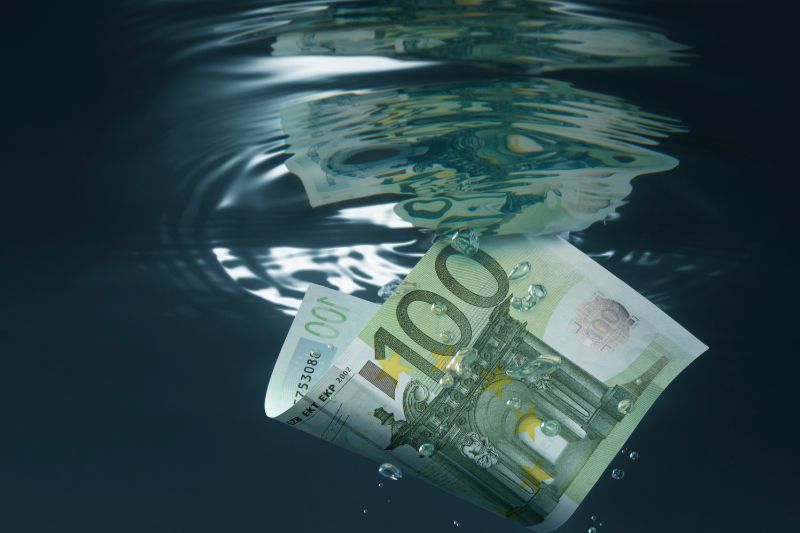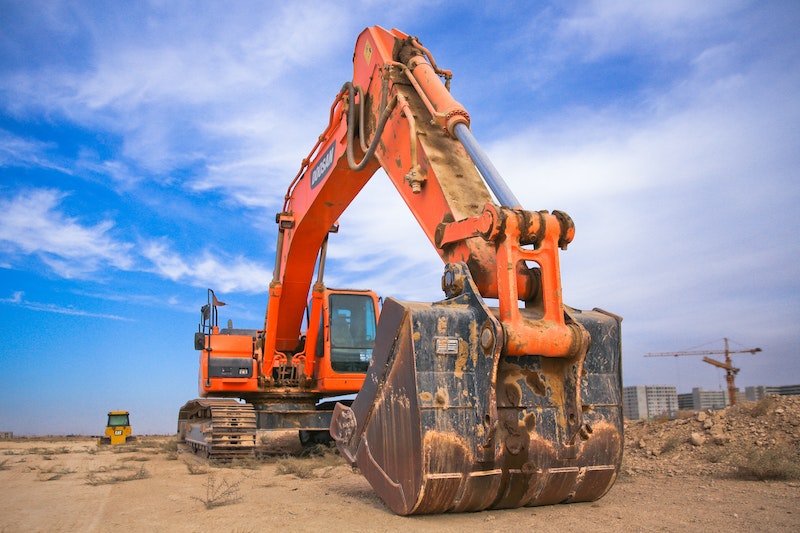Can Depreciation Be Negative?

Negative depreciation can cause warning bells to start ringing, but there are situations where depreciation is negative and still correct.
If you’re looking at the balance sheet, Accumulated Depreciation should be negative. But if your Depreciation Expense in the Income Statement is negative, you need to know why.
Let’s take a closer look at Depreciation to understand circumstances where it’s normal for this account to be negative.
Depreciation in the Profit and Loss Statement
Normally, the Depreciation Expense that appears in the Income Statement or P&L has a positive balance. This represents the periodic expense you recognize to spread the entire cost of a fixed asset like a building or a piece of equipment over its useful life. [1]
However, land is not subject to depreciation as it’s an asset gaining value over time.[3]

Why a Negative Depreciation Expense Looks Suspicious
Common accounting concepts dictate that Depreciation Expense should be a positive number. When your depreciation is negative, it creates the opposite process.
A negative depreciation adds value, which increases the original cost of long-term assets that your business owns.
Accounting doesn’t allow a negative depreciation method, but you can present property, plant, and equipment at fair value under the revaluation method. [2] As a result, you can update the cost of an asset to its fair value.
When Does Depreciation Expense Become Negative?
While a positive Depreciation Expense is ideal, there are cases where it appears as a negative value.
Data Entry Errors
Mistakes in entering information, like accidentally adding a negative sign, can result in a negative Depreciation Expense.
Miscategorized expenses can also lead to a negative balance. For instance, you collected Delivery Service Revenue of $2,000 and accidentally credited Depreciation Expense since it’s the next item on your dropdown list. If you already recorded the Depreciation Expense for the month amounting to $1,500, the Depreciation Expense in your P&L will be a negative figure -$500 ($1500 less $2,000).
You can minimize mistakes like this by integrating your POS system with your accounting software to capture sales and import them automatically to the correct account.
Errors in Entering the Depreciation Expense
Sometimes, a data entry error doesn’t result in a negative Depreciation Expense but correcting the error does.
For instance, if you’re using straight-line depreciation for a machine bought for $100,000 with an expected useful life of 5 years(60 months) and a salvage value of $10,000, the normal Depreciation Expense would be $1,500 ($100,000 less $10,000 divided by 60).
For instance, you entered the Depreciation Expense as $5,100 instead of $1,500 in January.
After discovering the error in February, you need to restore the correct balance of the Depreciation Expense by reducing the account balance by $2,100 to establish a balance of $3,000 ($1,500 x 2 months).
After this correction, the Depreciation Expense for your P&L from January to February will show the correct balance of $3,000. However, if you extract your P&L for the month of February, the Depreciation Expense will be -$2,100.

Error in Recording the Asset Value
An error made while entering the original cost of an asset may also result in a negative Depreciation Expense.
For instance, you recorded the original cost of the machine above $1,000,000 instead of $100,000. Instead of $1,500, you recorded a Depreciation Expense of $16,500 ($1,000,000 less $10,000 divided by 60) for January.
If you correct the error the following month, you need to remove $13,500 from the Depreciation Expense to establish the correct balance of $3,000 ($1,500 x 2 months).
Like in the scenario above, the P&L for January to February 2022 will show a Depreciation Expense of $3,000, but the Depreciation Expense for the month of February will be -$13,500.
Using an expense management system like Envoice that allows you to import expenses automatically to your accounting software helps you avoid mistakes in the recorded value of fixed assets. Automating a part of the process allows you to focus on data validation.
Other Adjustments
The Depreciation Expense may also become negative due to an adjustment like impairment loss or changes to the expected useful life or salvage value of your fixed assets.
Software-Related Error
Negative depreciation may also be because of your accounting software. If your financial statements look wonky, there could be something wrong with how you use the tool or with the software itself. So, it’s always important to review your financial reports regularly to catch errors.
Accumulated Depreciation in the Balance Sheet
Every entry to record Depreciation Expense has a corresponding credit to Accumulated Depreciation – the account that holds total depreciation recorded against property, plant, and equipment.
Accumulated Depreciation appears under the Asset section of the Balance Sheet with a negative figure because it has a credit balance. Unlike typical asset accounts such as Cash, Accounts Receivable, or Inventory with a normal debit balance, Accumulated Depreciation has a normal credit balance – that’s also why it’s called a contra asset.
Some balance sheets don’t show their Accumulated Depreciation account even if they have depreciable assets because Property, Plant, and Equipment are already net of depreciation and impairment losses. In this case, total Accumulated Depreciation for the period only appears in the Notes to the Financial Statements.

Always Investigate Negative Depreciation
While negative depreciation can be correct, it’s always better to double-check your work and investigate.
If you’re looking at Accumulated Depreciation in the balance sheet, a negative figure is normal since it is a contra-asset account. However, a negative Depreciation Expense on the P&L requires further investigation and, if needed, correction.
Accounting errors are unavoidable, but you can reduce mistakes with additional training, regular financial statement reviews, and automation.
Automating processes reduces your workload, giving you more time to catch and correct errors in your accounting records and investigate questionable items like negative depreciation. Explore how intelligent bots make accounting easier. Sign up for a free trial with Envoice today!
[1]https://www.accaglobal.com/an/en/student/exam-support-resources/
[2]https://www.accaglobal.com/an/en/student/exam-support-resources/fundamentals-exams-study-resources/
[3]https://www.accaglobal.com/gb/en/student/exam-support-resources/
STAY ALWAYS TUNED
Subscribe to newsletter
Still not sure?
- Don’t spend time on manual work
- Streamline bookkeeping processes with AI
- Automate invoice processing
- Integrate with the tools you rely on every day












